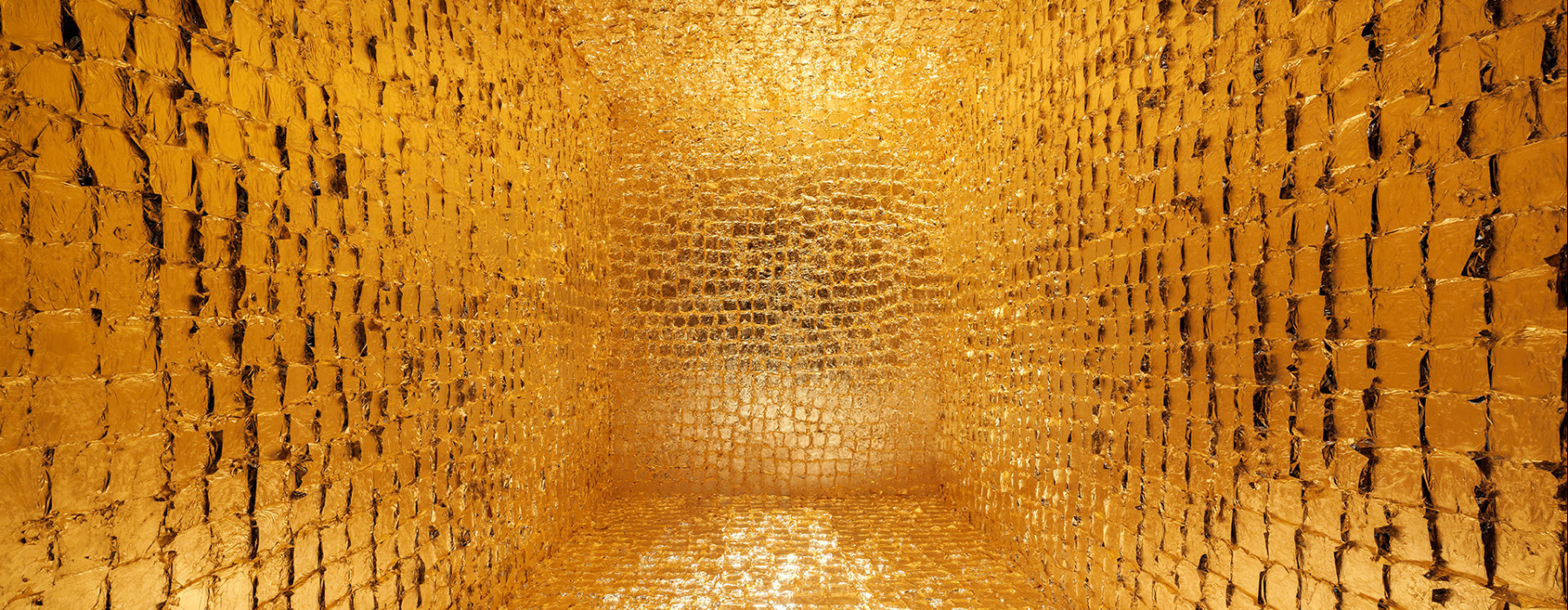
1. Chairs
Gold leaf, wood, rattan; Bali, Indonesia; early 20th century; gift of M. Nijhoff; RV-2582-1,-2
These two lavishly decorated gold chairs may come from the palace of Klungkung, the highest-ranking principality on the island of Bali.
2. Speaker’s staff, okyeame pomaa
Gold leaf, wood; Asante; Ghana; before 1991; purchased from Galerie Balou; TM-5373-2a t/m c
3. Speaker’s staff, okyeame pomaa
Oduro Ntonso; replica; gold paper, wood; Asante; Ghana; before 2000; commissioned for TM Junior; TM-R-1233
The image of the elephant is associated with the saying esono akyire nni aboa, ‘after the elephant there are no animals, no other animal is larger than the elephant'. The elephant thus symbolises great power.
4. Fly whisk, ahaban mmienu
Made by Kings & Queens; replica; gold paper, horse tail, wood; Asante; Ghana; before 2000; commissioned for TM Junior; TM-R-852.
5. William I’s crown
Pierre Meijer; gilt, copper, metal, glass, textile; Netherlands; 1815; courtesy of the Royal Collections, The Hague
This crown, used for the investiture of King William I in 1815, was the first royal crown in the Netherlands, and thus denotes the start of a new tradition. An investiture –not a coronation – means that the crown is never actually worn on the head. The crown symbolises the self-determination of the Kingdom of the Netherlands and the dignity of the head of state. This explains the simple design. This crown has featured in several royal portraits.
6. William II’s field marshal’s baton
Made by William Neal; gold, velvet; United Kingdom; 1846; courtesy of the Royal Collections, The Hague
Queen Victoria (1819-1901) made the Dutch King William II (1792-1849) a field marshal in the British army in 1845, in honour of his acts of heroism during the Battle of Waterloo. In 1847 the king received the field marshal’s baton that went with the rank. He was delighted to receive it. The gold knob has a miniature image of Saint George and the dragon, symbolising his courage.
7. Fan
Gold, velvet; North Sumatra, Indonesia; 1937; courtesy of the Royal Collections, The Hague
This ceremonial fan, known as a kipas, was a gift from the Sultan of Deli to Princess Juliana and Prince Bernhard von Lippe-Biesterfeld on their marriage in 1937. Indonesia was a Dutch colony at that time.
8. Letter from the Sultan of Madura to King William I
Gold leaf, paper, velvet; Madura, Indonesia; 1835; transferred from the Royal Cabinet of Rarities; RV-360-8080
Letter from Sultan Cakraadiningrat II of Madura, also known as Panembahan Cakraningrat VIII, to King William I, dated 19 February 1835. The letter accompanied a gift – a kris (dagger) that is now in the Rijksmuseum’s collection.
9. Curved dagger
Gold, horn, iron, wood, leather, decorative stones; Riyadh, Saudi Arabia; c. 1944; long-term loan from B.M.J. van der Meulen; TM-5803-1a
King Abdul Aziz Al-Saud of Saudi Arabia gave this gilded ceremonial dagger to Dutch diplomat Daniël van der Meulen (1894-1989) in 1944. It is an ornamental dagger, part of the Bedouin outfit that he received as a gift.
10. Decorative shield
Gold, buffalo leather, red velvet; Ethiopia; before 1955; long-term loan from A.J. d’Ailly; TM-2411-1a
This shield was a gift from Emperor Haile Selassie of Ethiopia to the Mayor of Amsterdam. The emperor visited the Netherlands in November 1954. The shield is a status symbol. Such a fine, perfectly round shield with lavish ornamentation reflects the high status of the giver in Ethiopian society.
11. Sirih box
Gold, tortoiseshell, wood, gemstones; Java, Indonesia; c. 1860; gift of F. Liefkes; RV-Liefkes-417 a – h
This rare sirih set is made of tortoiseshell inlaid with gold ornamentation. The box contains everything needed to make and present sirih, a stimulant that was chewed and spat out. The gold used to make the box and the accessories was status enhancing. It was an ideal gift from a Maduran ruler to a high-ranking Dutch national such as a governor or the governor-general.